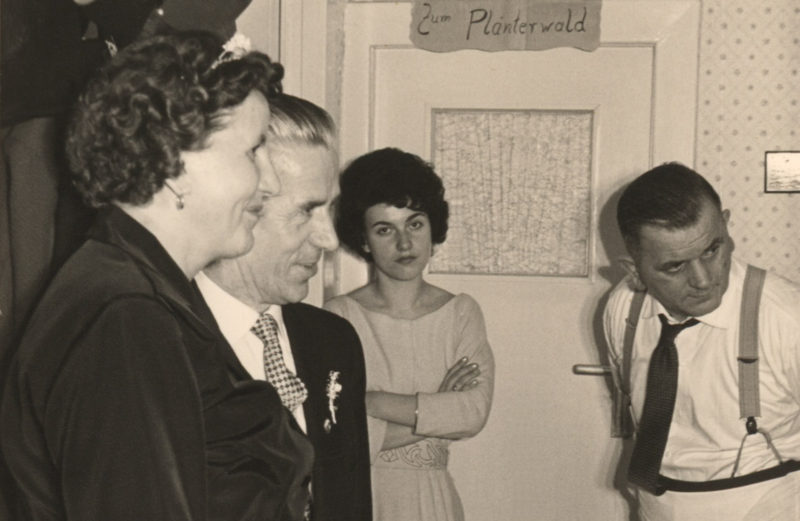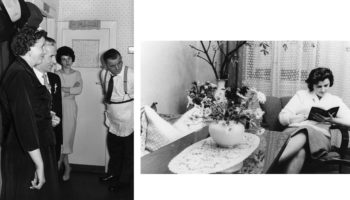Art movements don’t arise out of a vacuum. Instead, they are being triggered by other movements or political, cultural, or societal events, and this is what makes them often so interesting. Provoke, the short-lived, yet influential photography movement originating in Japan, was no exception. While in general not well-known in the world of photography as a movement, Provoke style photographs still are easily recognizable, with their high-contrast b/w, often with gratuitous amounts of grain and/or blur thrown in for good measure. Add to that the facts that the three publications produced by the movement have long been out of print and that much of the writing produced around them has been only accessible to those who can read Japanese, and it’s easily understandable that many people think Provoke merely was just another aesthetic or style, much like any of the various Instagram filters today.
Thankfully, a new book, a catalog produced at the occasion of an exhibition (Provoke – Between Protest and Performance), has now arrived to not only set the record straight, but to also place the movement into its proper art-historical context. In a nutshell, this essentially is the book we have all been waiting for: those who always wanted to know more about Provoke, and everybody else who is going to be in for a real photo history treat.
As its title indicates, the book extends the range of what it covers. The 1960s saw a huge wave of protests and demonstrations all across Japan, by students, farmers, and other people. These protests were triggered by a variety of specific and more general causes. Having emerged from World War 2 defeated and utterly devastated, Japan had undergone a rapid transformation into one of the most industrialized and wealthy nations in the world (granted, much of that was still going to happen well into the late 20th Century, until the bubble finally popped), embracing consumerism with a vengeance. One of its islands, Okinawa, had essentially been turned into a huge US military base, from which bombers would take off to then drop off their loads over Vietnam. Large parts of the younger and some parts of the older, traditional generation took massive offense at these developments, resulting in the aforementioned protests.
Photography played a considerable role in this development, as photobooks were produced around the protests. The first third of the book dives deeply into these, presenting a large variety of selected spreads from publications, texts written around that time, for example a diary written by Tomatsu Shomei, and essays produced at the occasion of the exhibition. Protests formed the breeding ground for some Provoke photographers, and a very fertile backdrop against which they would develop their movement.
In much the same fashion, performance and its documentation through photography emerged at roughly the same time as an art movement. This is covered in the final third of the book. Again, there was considerable exchange of Provoke photographers with this aspect of photography in Japan around the time. In fact, as the middle third, which focuses on Provoke itself, makes clear, the movement was a lot more than merely a funky aesthetic. The aesthetic itself really was quite secondary, and when its photographers realized things would get tied too much to it, they stopped (with the exception of Moriyama Daido, who has made a handsome career out of producing the same kinds of pictures for decades). In one of the interviews in the book this transition is described as Provoke turning from a language into a style, destroying its very essence.
What that difference between a language and a style really means is being made clear by the book. A key essay in the book is provided by Nakahira Takuma, writing about William Klein‘s New York book. A very important passage is provided by the following: “William Klein’s work differs from that of [Henri] Cartier-Bresson and Robert Frank in one key aspect: Klein thinks of photography as a method of searching and recognizing, as a plan for adventure in an endless world. Cartier-Bresson and Frank think of it as a means of direct expression of a specific view on the world or on life, such as the viewpoint are lonely and miserable.” (Nakahira Takuma, “William Klein,” in Provoke – Between Protest and Performance, p. 362ff., Steidl, 2016; the quoted passage can be found on p. 366 [my emphasis]) Here is the key driver of Provoke.
In addition to discussing Western influences, the book also places Provoke into its Japanese photography context, featuring work by Shomei Tomatsu or Araki Nobuyoshi (the latter apparently wanted to join Provoke, but never managed to do so). The difference between a language and a style, the difference between genuinely looking for what can be found and looking for confirmation of what is already known — these aspects of photography have never left us, and they probably never will. We could use these polar opposites as tools for criticism — isn’t, say, New Formalism so insufferable exactly because it’s merely a style that affirms what’s already known (and shouldn’t the curators who have been hyping it know, actually: demand a lot better)?
So Provoke – Between Protest and Performance is not just a book of interest for those curious about a short-lived photography movement. It also teaches us a lot more about the role of photography in society, which, and this is quite important, means the role photographers demand to play in society. Almost gloriously failing, the Provoke photographers wanted a lot more, generating one of the visually most exciting movements in the medium’s history. Who says that something like that isn’t possible today?
For that to happen, though, we’d all need to shed the neoliberal thinking that is so firmly embedded in the world of photography: if you want more, you certainly won’t get it by whining or whimpering, or by fighting over the tiny crumbs someone with a lot of money and/or power might throw at you. You get it by doing something, by brushing against the grain, by making pictures that, at least to you, mean something. Even if you might ultimately fail, the resulting ripples might have lasting impact — much like Provoke‘s.
Provoke – Between Protest and Performance; edited by Diane Dufour and Matthew Witkovsky; 680 pages, 600 images; Steidl; 2016




